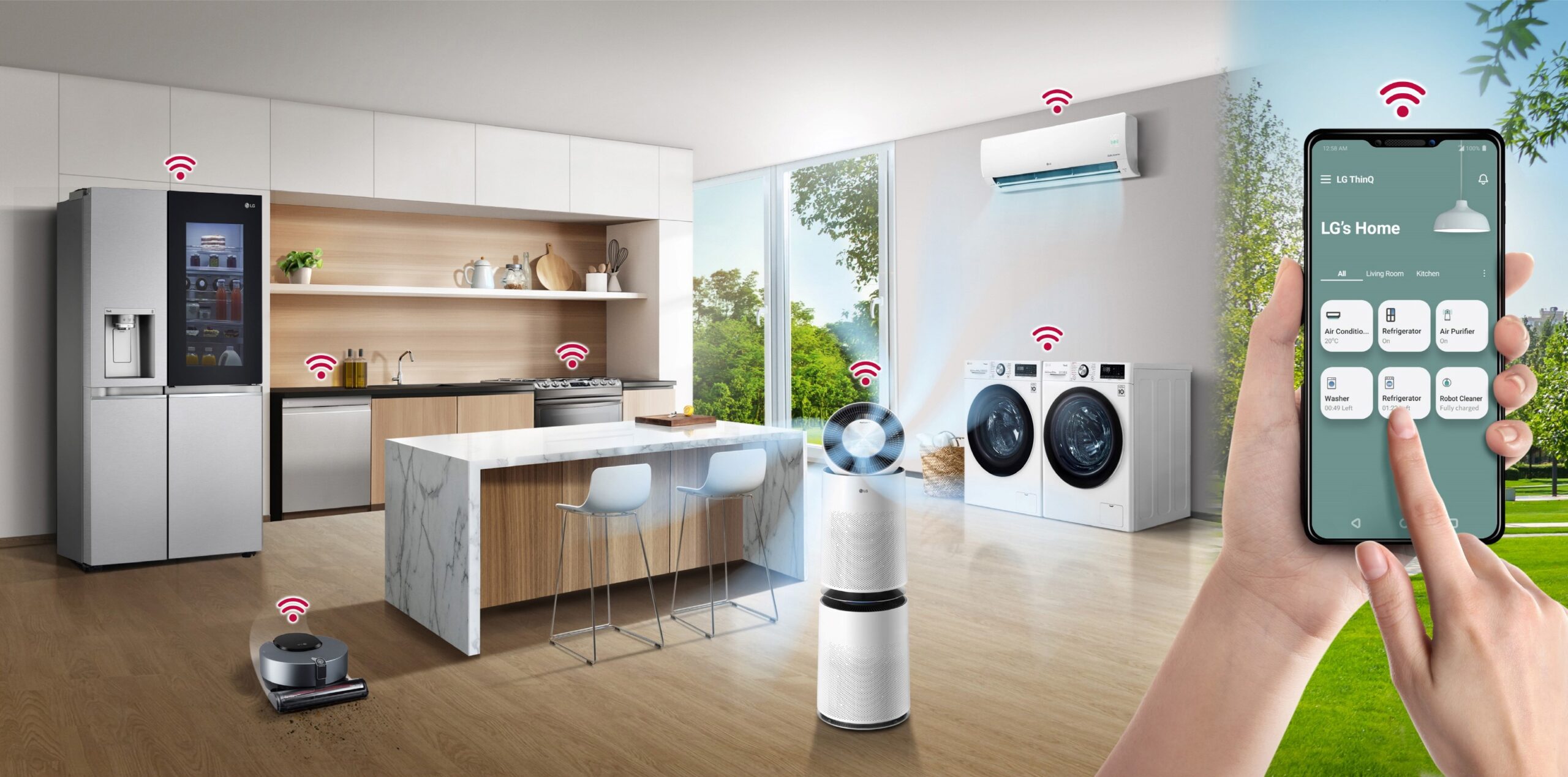Exploring the Smart Appliances Market: Future-Ready Homes
Exploring the Smart Appliances Market: Future-Ready Homes
Blog Article
The smart appliances market is experiencing a remarkable transformation, fueled by the convergence of digital connectivity, artificial intelligence, and the growing demand for energy-efficient solutions. From refrigerators that can track groceries to washing machines operated via smartphones, the smart appliances market is redefining the modern home.

This blog explores the current state of the market, emerging trends, growth drivers, key challenges, and what the future holds for smart appliances across the globe.
Understanding the Smart Appliances Market
Smart appliances are devices that can connect to a network (usually via Wi-Fi or Bluetooth) and be controlled or monitored remotely. These appliances often integrate sensors, AI capabilities, and automation to offer improved performance, convenience, and energy management.
Common smart appliances include:
Smart refrigerators
Smart washing machines and dryers
Smart dishwashers
Smart air conditioners
Smart ovens and microwaves
Smart vacuum cleaners and robotic cleaners
Smart lighting and thermostats
The integration of these devices into the Internet of Things (IoT) ecosystem enables users to manage household tasks more efficiently, often through a centralized mobile app or voice assistants like Amazon Alexa or Google Assistant.
Market Drivers
1. Technological Advancements
The rapid development of IoT, AI, and machine learning technologies has enabled manufacturers to design intelligent appliances that learn user preferences, schedule operations, and deliver predictive maintenance alerts.
2. Rising Energy Efficiency Awareness
With increasing concerns about energy consumption and sustainability, smart appliances offer solutions that reduce electricity usage through optimized performance, remote management, and integration with renewable energy systems.
3. Growth in Smart Homes
The proliferation of smart homes is a key contributor to the expansion of the smart appliances market. Consumers are adopting interconnected ecosystems that seamlessly integrate appliances, lighting, security, and entertainment systems.
4. Increased Smartphone Penetration
Wider access to smartphones and mobile internet, particularly in developing economies, has made it easier for users to adopt and operate smart appliances, further driving market adoption.
5. Urbanization and Busy Lifestyles
As urban dwellers seek convenience, time-saving, and remote control over home functions, smart appliances serve as valuable tools in modern living environments.
Market Challenges
1. High Initial Costs
Despite their benefits, smart appliances often come with higher price tags compared to traditional alternatives. This price premium can be a barrier, particularly in cost-sensitive markets.
2. Privacy and Security Concerns
The connectivity of smart devices opens up potential vulnerabilities related to data privacy and cybersecurity. Consumers remain cautious about allowing constant data transmission within their homes.
3. Compatibility and Interoperability
Lack of standardization across platforms can cause compatibility issues, making it difficult for consumers to build fully integrated smart home systems using devices from multiple brands.
4. Limited Awareness in Rural Markets
In less urbanized or developing regions, awareness and infrastructure for smart appliances are still limited, slowing market penetration.
Key Trends in the Smart Appliances Market
Voice Control Integration: Increasing adoption of voice-enabled assistants for hands-free operation of smart devices.
AI and Predictive Maintenance: Use of machine learning to predict component failures and schedule repairs before a breakdown occurs.
Remote Diagnostics and Software Updates: Cloud-based systems now allow for OTA (Over-the-Air) updates and troubleshooting.
Eco-Friendly Design: Energy Star-certified smart appliances are in demand due to heightened environmental consciousness.
Smart Kitchens: Smart ovens, coffee makers, and inventory-tracking fridges are contributing to the rise of fully digital kitchens.
Regional Market Insights
North America: One of the largest markets due to high technology adoption, disposable income, and smart home penetration.
Europe: Strong growth in eco-friendly appliances driven by strict environmental regulations and consumer awareness.
Asia-Pacific: Fastest-growing region, particularly in countries like China, India, South Korea, and Japan, due to urbanization and infrastructure development.
Latin America & Middle East: Emerging demand led by increasing interest in smart cities and connected living spaces.
Major Players in the Market
Leading companies in the smart appliances market include:
LG Electronics
Samsung Electronics
Whirlpool Corporation
Bosch
GE Appliances
Haier
Panasonic
Electrolux
These players are investing in R&D, partnerships, and product diversification to strengthen their market position and cater to evolving consumer preferences.
Future Outlook
The future of the smart appliances market looks promising, with expectations for steady growth in both volume and value. As technology becomes more affordable and AI capabilities more sophisticated, smart appliances will become mainstream household assets rather than luxury items.
By 2030, smart appliances are anticipated to be integral to sustainable urban development, with predictive analytics, zero-touch operation, and interoperability being standard features.
Conclusion
The smart appliances market is at the intersection of innovation and necessity. It reflects how technology can simplify everyday tasks, optimize energy use, and enhance overall lifestyle quality. While challenges around affordability and cybersecurity persist, the market continues to evolve, offering smarter, safer, and more sustainable solutions for modern homes.
As digital living becomes the norm, smart appliances are set to be the core components of the connected homes of the future.
Related Trending Reports
| Private Banking Market |
| Insurance Third Party Administration Market |
| Debt Collection Services Market |
| Specialty Insurance Market |
| Unsecured Business Loans Market |